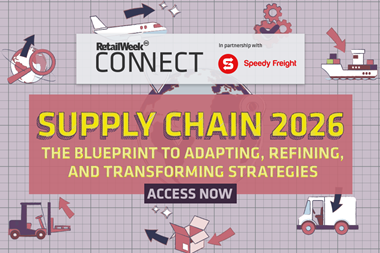Customer satisfaction is key to retaining loyalty and driving revenue, but even in the digital age it’s hard to get a handle on feedback. Critizr offers tips for a successful customer feedback strategy.
A recent report revealed just how much we all love using emojis – instantly expressing and sharing our emotions and experiences with a single touch of a smartphone.
“How handy it would be if an emoji could wondrously pop up above customers’ heads as they walk through the store’s aisles and departments”
Imagine if the thoughts and feelings of our retail customers could be simply and swiftly communicated. Are they wowed or underwhelmed? Irritated or satisfied? Are they leaving your store with a vow to never come back, or sharing their joy with friends? Will they shop with you again?
How handy it would be if an emoji could wondrously pop up above customers’ heads as they walk through the store’s aisles and departments. Would it be happy tears or heartbreak?
Whether consciously or not, every time a customer walks through a retailer’s doors or logs on to its website, they have an emotional response. And be it positive, negative, or somewhere in the middle, customers rarely make their feelings known – studies reveal that a whopping 98% of dissatisfied customers never complain – yet collectively these responses hold huge significance on the business and the bottom line.
Focus on feedback
For this reason, retailers really need to focus on collecting and measuring customer feedback, collating their levels of satisfaction and levels of loyalty to understand their feelings and behaviours.
In this retail age, experience ranks higher than product or price – over half of customers won’t return to a store after just one unresolved negative experience. Retailers must drive value from retaining customers, with over two thirds of businesses naming improved customer experience as their top priority.
Customer feedback management is now driving decision-making at every level of business, not just the marketing department. The resulting data, when used in the right way, can have a transformative effect on performance and profit.
Here are some tips for a successful customer feedback strategy:
Pick the right metrics
Retailers must first choose the right customer feedback metrics – and one size does not fit all.
A mix of indicators will give a complete view of the customer, tailored to the unique needs of the business.
These are the top five to assess:
1. Satisfaction rate: Perceived quality while using your product or service, offering five options to quantify satisfaction. This metric relies on emotional factors relating to the overall experience, or on specific criteria (such as customer service or wait times).
2. Net Promoter Score: An indicator of customer loyalty, measuring performance and brand image. The score gives a rating between -100 to +100 of how likely a customer is to recommend you to friends and family.
3. Customer satisfaction: A versatile, accessible score allowing customers to express satisfaction with a simple ‘yes’ or ‘no’ answer giving a percentage score, or with a rating or number of stars.
4. Intention to buy again: This reflects your customers’ experiences, past and present, with your product or brand, as a percentage of responses received. A high percentage indicates consumer trust, which is good for positive word of mouth.
5. Customer Effort Score: Another indicator of loyalty, focused on operational aspects to understand obstacles in the customer experience. A rating of 1 to 5 measures the effort it has taken for a customer to buy something, collected straight after purchase.
See more examples here.
Engage with customers
Low engagement and completion rates are the biggest threats to the success of a customer feedback strategy. Without sufficient volume of data, a retailer will be less likely to trust the insights it produces.
“Customers want choice, and to pick the format that works for them – whether that’s email, web, apps, SMS, in-store kiosks, social media, or external review sites”
The secret to getting customers on board is simplicity and variety.
An omni-channel approach is also crucial. Customers want choice, and to pick the format that works for them – whether that’s email, web, apps, SMS, in-store kiosks, social media, or external review sites.
A broad, integrated range of feedback options suited to your own customer demographic works best.
Hand power to the people
Finally, make sure the whole team, from local shop floor to senior management, are engaged and enabled to use feedback. If precious customer data is stuck in a silo at HQ, with no visibility outside IT or marketing, what’s the point?
Use smart technology to turn feedback into insights and action plans, routed in real time to the managers and staff who can deliver in branch.
Senior teams, of course, need data to drive the big strategic picture of your business, but when it comes to pushing up customer satisfaction scores and improving the customer experience, nothing will add more value to your business than empowered and informed local staff making it happen for your customers on a daily basis.

Sebastien Riolo is senior customer success manager for Critizr UK.
A customer experience specialist with over 15 years’ experience in operations and project management, Sebastien leads Critizr UK’s customer success strategy. Formerly a client partner at Satmetrix UK, he specialises in operational and technical aspects of the platform.
Learn more about measuring customer satisfaction here.































